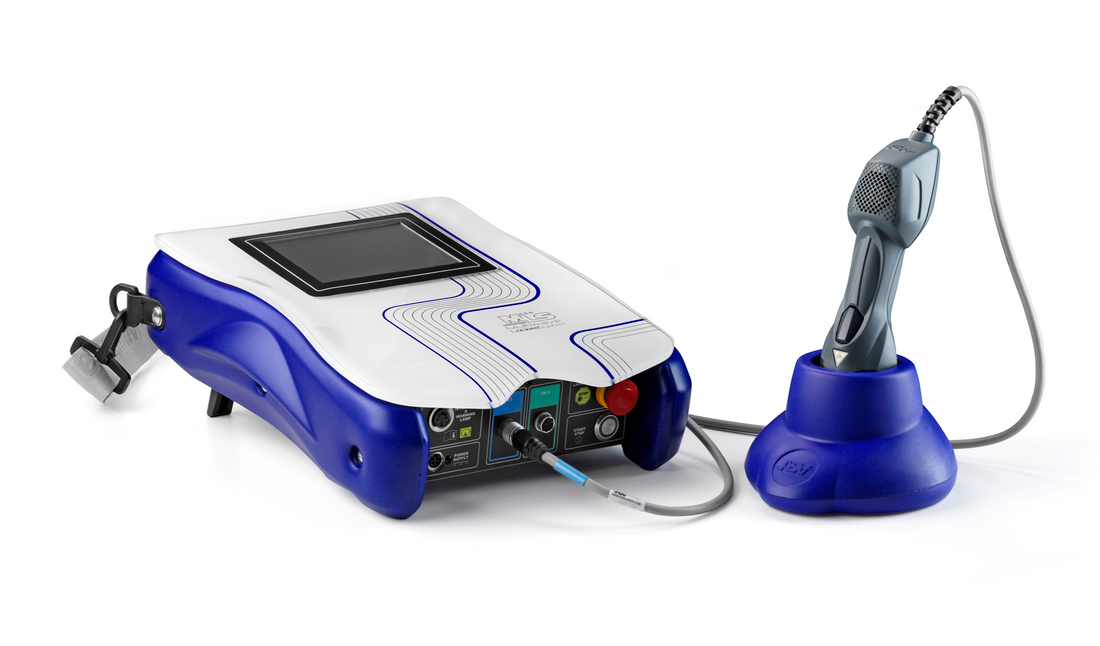
MLS Laser Therapy for Lower Limb Injuries
Share
Introduction
In the world of podiatry, the treatment of lower limb injuries, particularly those affecting the foot and ankle, has seen significant advancements in recent years. Among these innovations, MLS Laser Therapy has emerged as a powerful tool for podiatrists and patients alike. This non-invasive, painless, and highly effective therapy has been a game-changer in the management of lower limb injuries. In this blog, we will explore the key features and benefits of MLS Laser Therapy for lower limb injuries, emphasising its role in podiatry.
Understanding Lower Limb Injuries
Lower limb injuries can be debilitating, affecting one's mobility, quality of life, and overall well-being. Podiatrists are healthcare professionals who specialise in the diagnosis and treatment of conditions related to the lower limb, particularly the foot and ankle. Common lower limb injuries they address include:
- Plantar Fasciitis
- Achilles Tendinitis
- Ankle Sprains
- Neuropathy
- Osteoarthritis
- Heel Spurs
- Sports-related Injuries
Conventional Treatment Approaches
Traditionally, lower limb injuries have been managed using a combination of approaches, including rest, physical therapy, anti-inflammatory medications, and sometimes even surgical intervention. While these methods are effective to varying degrees, they often involve extended recovery periods and potential risks.
MLS Laser Therapy: A Breakthrough in Podiatry
MLS Laser Therapy, also known as Multi-wave Locked System Laser Therapy, has transformed the way podiatrists address lower limb injuries. This cutting-edge treatment option has gained recognition and popularity for several key features:
- Non-Invasive and Painless: MLS Laser Therapy is a non-invasive treatment that requires no incisions or injections. Patients experience minimal to no discomfort during sessions, making it an excellent choice for those who prefer to avoid surgery or invasive procedures.
- Targeted Precision: MLS Laser Therapy delivers precise wavelengths of light to the affected area. This precision promotes faster and more effective healing while minimising the risk of collateral damage to healthy tissues.
- Speeds Up Healing: This therapy promotes tissue repair, reduces inflammation, and relieves pain. It stimulates the body's natural healing processes, helping patients recover faster and return to their daily activities sooner.
- Reduced Inflammation: By reducing inflammation in the lower limb, MLS Laser Therapy alleviates pain and discomfort, allowing patients to experience improved mobility and functionality.
- No Side Effects: Unlike some medications or surgery, MLS Laser Therapy carries virtually no side effects. Patients can undergo treatment without the worry of adverse reactions or complications.
- Customisable Treatment Plans: MLS Laser Therapy can be tailored to the specific needs of each patient. Podiatrists can adjust the treatment parameters to optimise outcomes for various lower limb injuries.
- Long-Lasting Results: Many patients report sustained relief from pain and improved function even after their MLS Laser Therapy sessions have concluded.
Conclusion
MLS Laser Therapy has become a cornerstone in podiatry for addressing lower limb injuries, including those involving the foot and ankle. Its non-invasive nature, precision, and ability to accelerate healing make it a sought-after treatment option for patients looking to regain their mobility and reduce pain without resorting to surgery or extended downtime.
As the field of podiatry continues to advance, MLS Laser Therapy stands as a testament to the commitment to providing patients with cutting-edge solutions for their lower limb injuries. If you're suffering from a lower limb injury, consider discussing MLS Laser Therapy with your podiatrist as a potential treatment option. It might just be the key to a quicker and more comfortable recovery.
